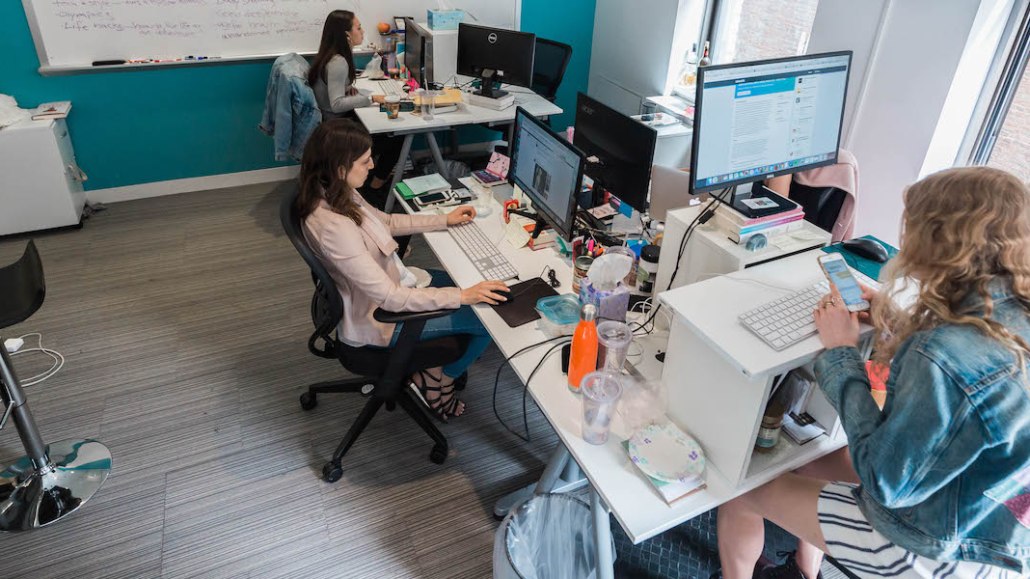Connect with execs from The New York Times, TIME, Dotdash Meredith and many more
How Business Insider’s distributed brand Insider is diversifying from Facebook

Insider, the lifestyle spinoff of Business Insider launched as a distributed brand 19 months ago, is now figuring out how to turn a distributed brand into a successful owned and operated property.
Last May, Insider launched its own website at thisisinsider.com, eight months after debuting on social media. Unlike videos hosted on platforms, Insider found that posts on its website work best if they have a service component. While users might gravitate toward any shiny object they see in their Facebook feed, if they’re going to stick around on the publisher’s site, Insider has to frame content “around what is useful for that person,” said Nicholas Carlson, Insider’s editor-in-chief.
Take food. A video featuring one food dish at a restaurant will perform well for Insider on Facebook. But on the site, these videos “became like trivia rather than useful information,” Carlson said. So on the site, Insider’s posts are now more likely to show someone how to make a food dish themselves.
Carlson also noticed that videos that contain a lot of subjects, like those showcasing 30 luxurious vacations spots, did well on social platforms but fell flat on the site. Insider now repurposes these videos into photo essays with brief descriptions. “Users want to scroll at their own pace,” Carlson said.
Since the launch, Insider’s site has grown across several metrics. ComScore data shows that Insider’s website had 3.9 million unique visitors in February, which is up from June (the first month comScore had available data for), when the site registered 364,000 unique visitors.
Insider’s site team has expanded from 10 to 15 employees, and Carlson said its headcount could grow to 30 by the end of the year as the site looks at expanding into new verticals around style, beauty and tech. The overall Insider team is now at 50 people, and Carlson expects it, too, could double in size this year.
The growing team will have to keep a close eye on Facebook’s changing priorities. In January, Facebook changed its algorithm to give longer videos a boost. Although none of the pages saw their total followers drop, Tubular Labs data shows that across several of the largest Insider Facebook pages — Insider, Insider Food, Insider Art and Insider Travel — the average monthly video views declined from 235 million views in January to 151 million in March on average. The more niche Facebook pages — like Insider Cheese, Insider Science and Insider Pop Culture — haven’t seen a decline as their views shot up from under 100,000 in January to about 2.5 million in March on average. A BI spokesperson said that the decline in total views is attributable to Insider “experimenting with fewer and longer videos” on Facebook.
Insider’s website relies primarily on programmatic revenue, which accounts for more than 80 percent of the website’s revenue most months. The larger Insider brand still makes most of its money through Facebook’s suggested video program and by getting advertisers to pay for their own videos on platforms. Insider declined to share financial figures or if the website was profitable yet.
Although Insider now has a property that exists outside of the platforms, it is still highly dependent on them. About 75 percent of the website’s traffic comes from social and almost all of it is driven by Facebook, according to SimilarWeb. Carlson was unfazed when asked if the publication he runs is too dependent platforms with their own motivations.
“You have the build the product that the audience wants,” he said. “And I think they want the content where they already are.”
This article has been updated to reflect that Insider is posting fewer videos on Facebook.
Photo via Insider
More in Media

Retail media meets publishing: News UK, Future and Ocado tap clean room tech for smarter data targeting
News UK, The Independent, Immediate Media and Future are teaming up with retail media network Ocado to test clean room-powered data matching.

From sidelines to spotlight: Esports events are putting creators center stage
Esports events’ embrace of content creators reflects advertisers’ changing priorities across both gaming and the wider culture. In the past, marketers viewed esports as one of the best ways to reach gamers. In 2025, brands are instead prioritizing creators in their outreach to audiences across demographics and interest areas, including gaming.

Condé Nast and Hearst strike Amazon AI licensing deals for Rufus
Condé Nast and Hearst have joined the New York Times in signing a licensing deal with Amazon for its AI-powered shopping assistant Rufus.








